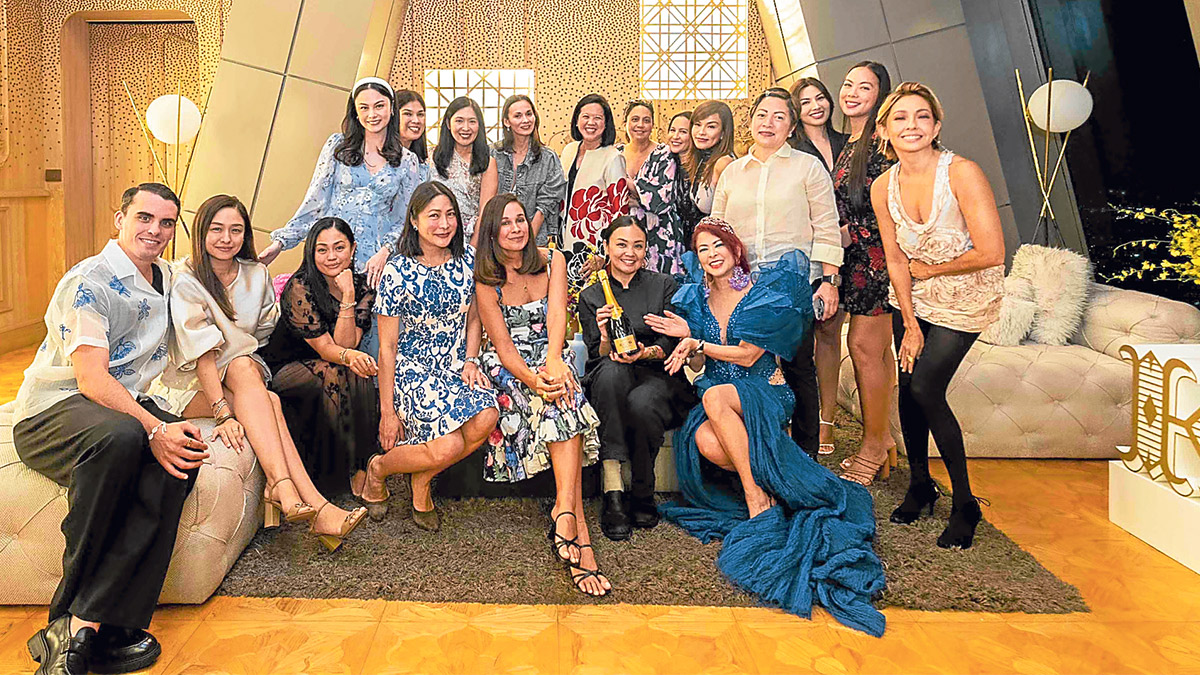“A Second Chance” was the film to see this week.
I had to go to two cinemas before finally scoring tickets to the film on marital love, starring John Lloyd Cruz and Bea Alonzo.
A sequel to 2007’s “One More Chance,” which was that year’s runaway hit, “A Second Chance” seems poised to give the Star Cinema people much to rejoice about in the coming week. On the first day alone, it grossed P43 million; beat that.
One cinema in my neighborhood was charging P800 for its lazy-boy seats. The seats easily sold out. When I asked the girl at the box office if the ticket included popcorn, she said no. In my head I was thinking, P1,600 for a movie? I don’t love Popoy and Basha that much, so off to the next closest cinema I went.
The movie house was jam-packed. All seats were taken. There was a block screening before us sponsored by the pharmaceutical company whose products John Lloyd endorses. The doctors (mainly pediatricians) and med reps came in droves.
Raw reality
What is it about the Popoy-Basha tandem that makes us head for the cinemas as soon as their movie opens?
I believe it is the reality and the rawness of it all. Yes, the kilig and the hugot lines hit us where it matters, but more than that, I think the realities presented to us by writers Vanessa Valdez and Carmi Raymundo really strike a chord and resonate with many moviegoers.
The writers, along with director Cathy Garcia Molina, avoid sugarcoating love as a subject. “One More Chance” was the definitive romantic movie of the millennials, and “A Second Chance” takes off from that.
Most people who have seen the film complain that there wasn’t too much kilig, which they found disappointing.
“A Second Chance” is the story of a young couple struggling through a marriage, in which expectations are high and dreams are shattered. Which means there really won’t be too many kilig moments.
Of course it also doesn’t mean that once you’re married, the kilig dries up; but, as the film shows, the likelihood of that occurring in the face of two egos colliding, along with other challenges and obstacles, is pretty high.
People grow up, people evolve, and “A Second Chance” clearly depicts this in the evolution of the characters of Popoy and Basha, and in the love they have for one another. In art, as in life, so much has changed in their personalities and lives since they first reunited in 2007. They’re older now, and the eight years have imbued them with more patience and wisdom, and just like the rest of us, they continue to grow.
It will be interesting to see another Popoy-Basha film, perhaps in 12 years, when Cruz and Alonzo find themselves at midlife, exactly 20 years from “One More Chance.” That would certainly make for some pretty interesting dialogue and material.
Question at midlife
Yesterday, I went into the cinema with no expectations, maybe because I’m older than the characters I was about to watch on the screen, and some of the issues they have to grapple with were part and parcel of a life I had once been through.
Part of me was wondering what all the sniffling was about, because, though Cruz and Alonzo are both brilliant actors, none of the scenes really resonated with me—until somewhere toward the end of the film, Cruz’s character, Popoy, says, “It’s brave to ask ‘what if,’ but it’s braver to embrace ‘what is.’”
Wow. Suddenly I found myself blinking away a tear.
How many times in the last seven years had I asked myself that question? It’s something that pops up often at midlife, not just in the realm of the personal, but in the professional as well.
Popoy’s struggles resonate with midlife, or with anyone who chose to give up a dream because of more important priorities. It’s a question that reappears perhaps at every life stage, sometimes hovering, sometimes staying on for long periods of time.
What if? These are very powerful words.
Intolerable
And then somewhere along life’s way, we learn, as Popoy and Basha do, to love and embrace that what is that we find ourselves in. It is only when the what is becomes intolerable, such that it affects our mental and physical health, that we find the courage to change the situation and do something about it.
Embracing life’s what is, whether in relationships—be it with a spouse, a partner, a friend—or in one’s job, or in losses that take place, is living what Rilke wrote about beautifully: “Be patient toward all that is unsolved in your heart and try to love the questions themselves, like locked rooms and like books that are now written in a very foreign tongue. Do not now seek the answers, which cannot be given you because you would not be able to live them. And the point is, to live everything. Live the questions now. Perhaps you will then gradually, without noticing it, live along some distant day into the answer.”
Everything that is meant comes into fruition at the proper time. What ifs are useless if they make us pine for what is lost; what ifs only become powerful if they propel us into something that will make us better.
Embracing what is, and allowing events to unfold as they must, is the space that allows the heart to expand, and our faith to grow the most.
E-mail the columnist: [email protected]













































